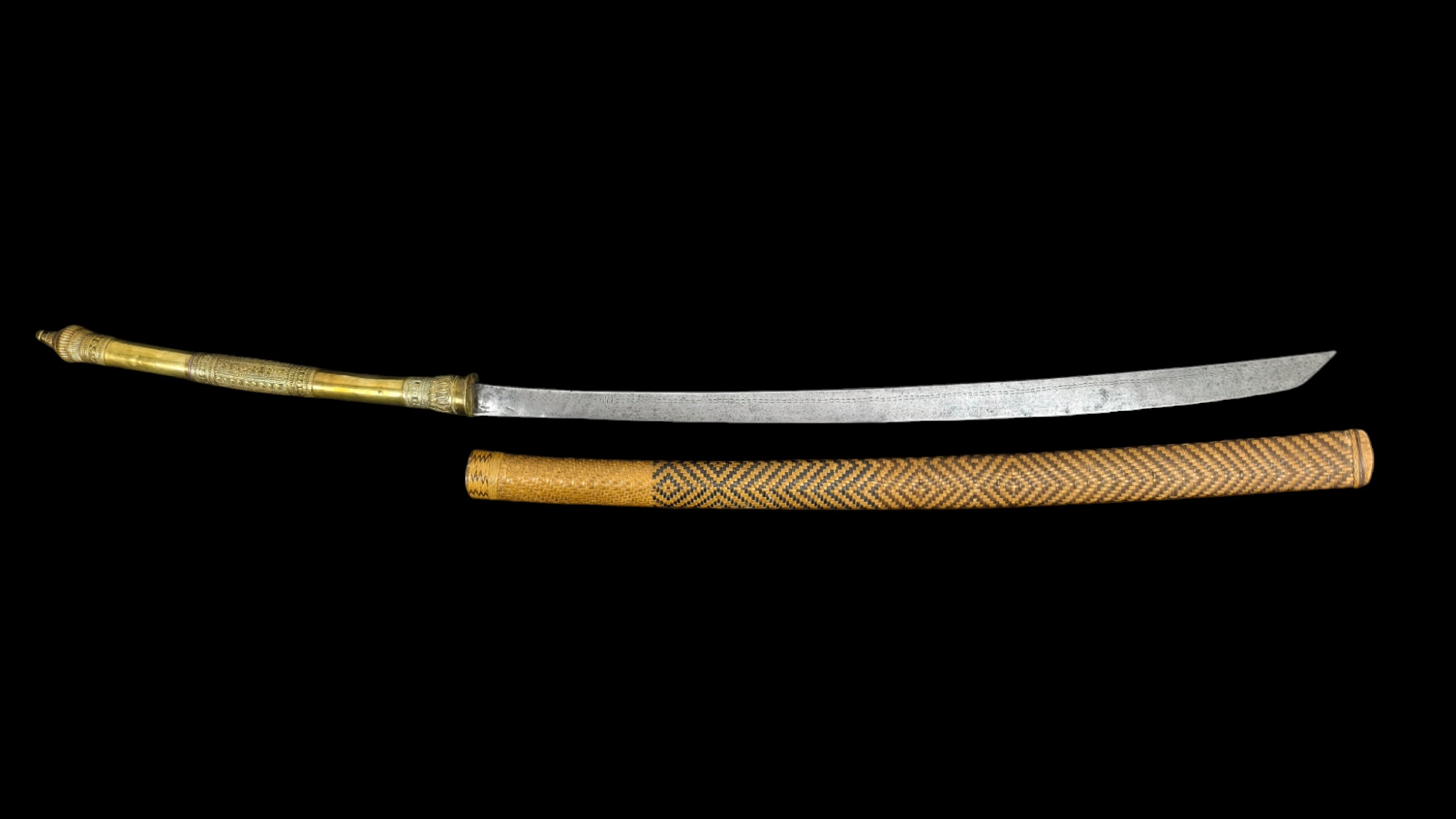
Attapeu & Lan Xang - Swords of Bronze
December 29, 2024 Asian Arms
I have previously written about the probable connections between a type of cast bronze handled swords found in the area of southern Laos, northern Cambodia and across the border into parts of Vietnam which are commonly referred to as an 'Attapeu type'; with both Khmer and possibly Champa styles being incorporated. However, I did not examine in any great detail the following influence of Lan Xang and the Tai or Laotian peoples on this type.
These swords seem to be a blend of influences but the type that is the subject of this article starts to show clear traits of a strong Buddhist influence most likely stemming from Lan Xang, the dominate kingdom in the area for centuries. In particular the lotus bud style pommels are something that is strongly connected with Buddhist iconography. Certainly this style of pommel can be observed on other Laotian swords as well as bronze cast handles as detailed in some length in this article.
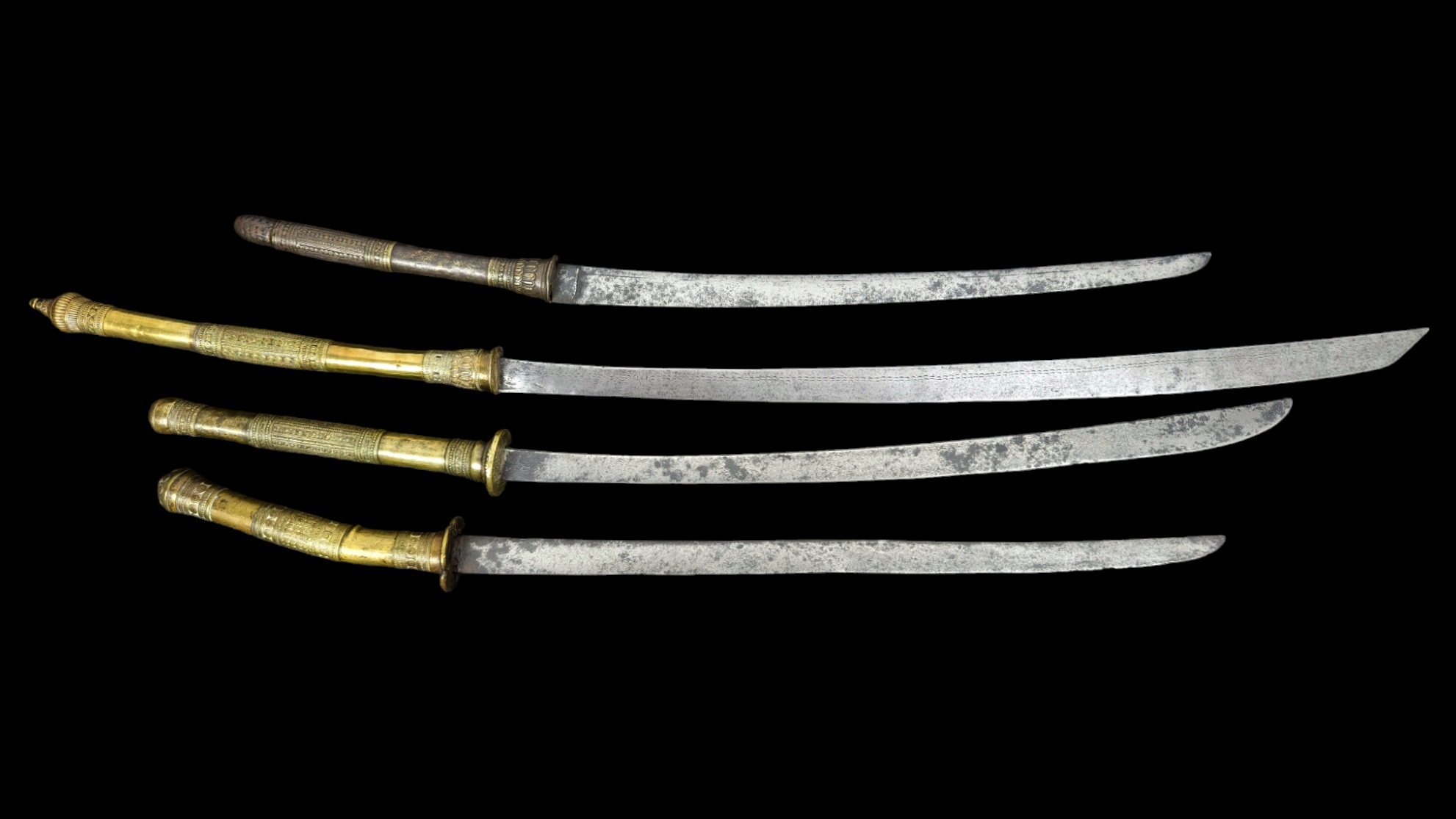
Attapeu is an interesting region of Laos that has a lowland Lao population and a large number of minority hill groups who are largely Mon-Khmer in ethnicity. It has long been a part of various Laotian polities including Lan Xang and later the kingdom of Champasak. In fact it has some claim to fame as the area where king Setthathirath met his untimely end during an ill-fated campaign against the Khmer in the 16th century. The Lao in the region are known as the Lao Loum or lowland Lao and form the majority population of the country and the area has been settled for many centuries, in fact it is quite likely the Khmer utilised the region for its rich mineral resources including bronze during the height of the Khmer empire.
The typical style of hilt in this region consists of a multi-part cast, usually consisting of a flared guard tube, a grip section with ornately cast patterns and a pommel with a lotus bud form. A variety of blade styles can be found in these mounts and there are some variations in terms of he exact decorative motifs but they are all closely related. The example that is the subject of this article is classic in terms of the cast components but features a very long blade, shown below with a standard sized sword from the same region.
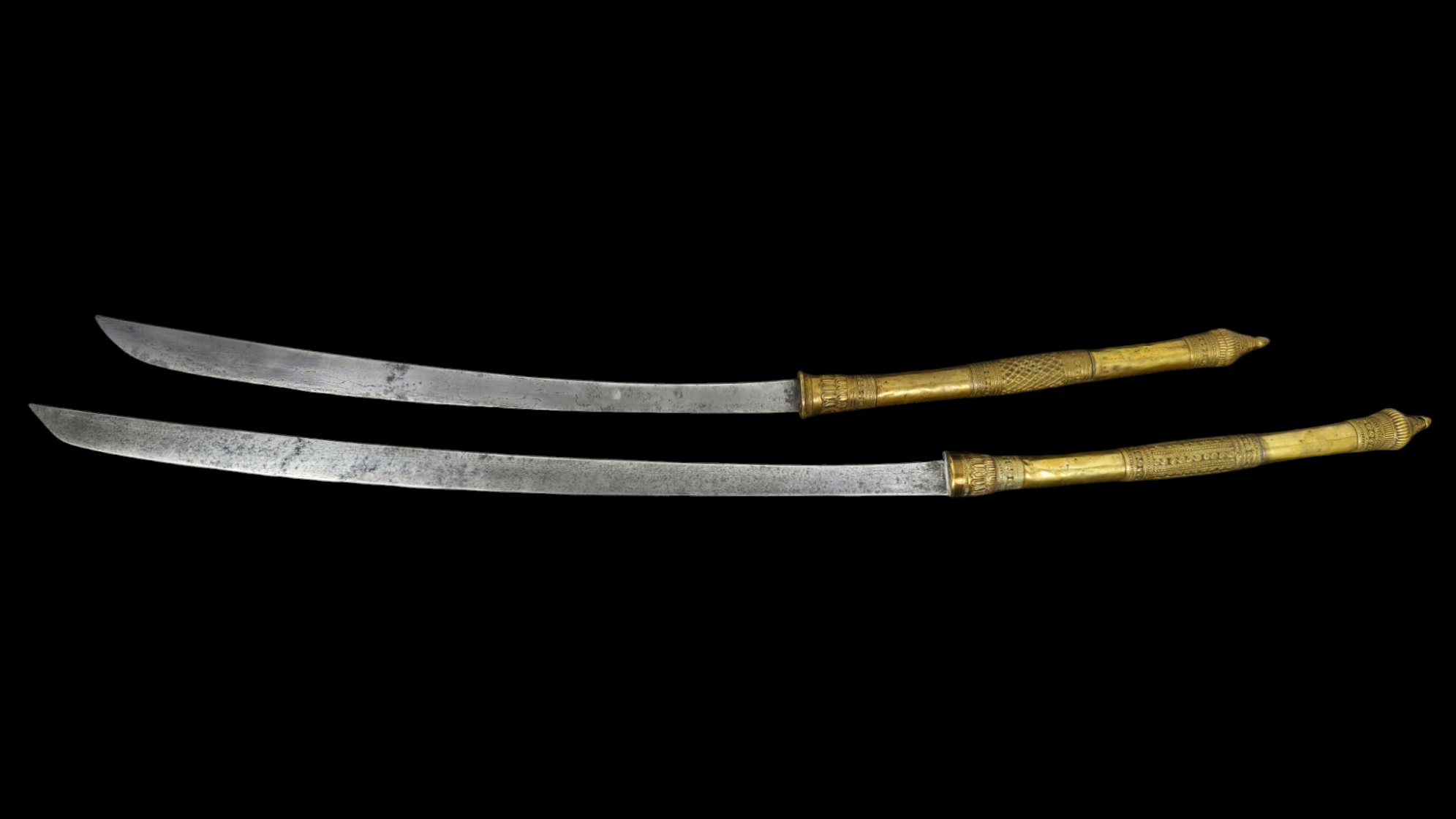

Most dha/daab do not exceed 100cm and many are much shorter, while this one is 112cm with a 73cm blade. It is also relatively heavy at slightly over 1kg. The blade has some features often found on Lao blades, a somewhat narrow waist and a wider mid and tip section culminating with a 'chisel' point that bares some resemblance to a katana.
This sword is in particularly good condition with all the mentioned hilt components.

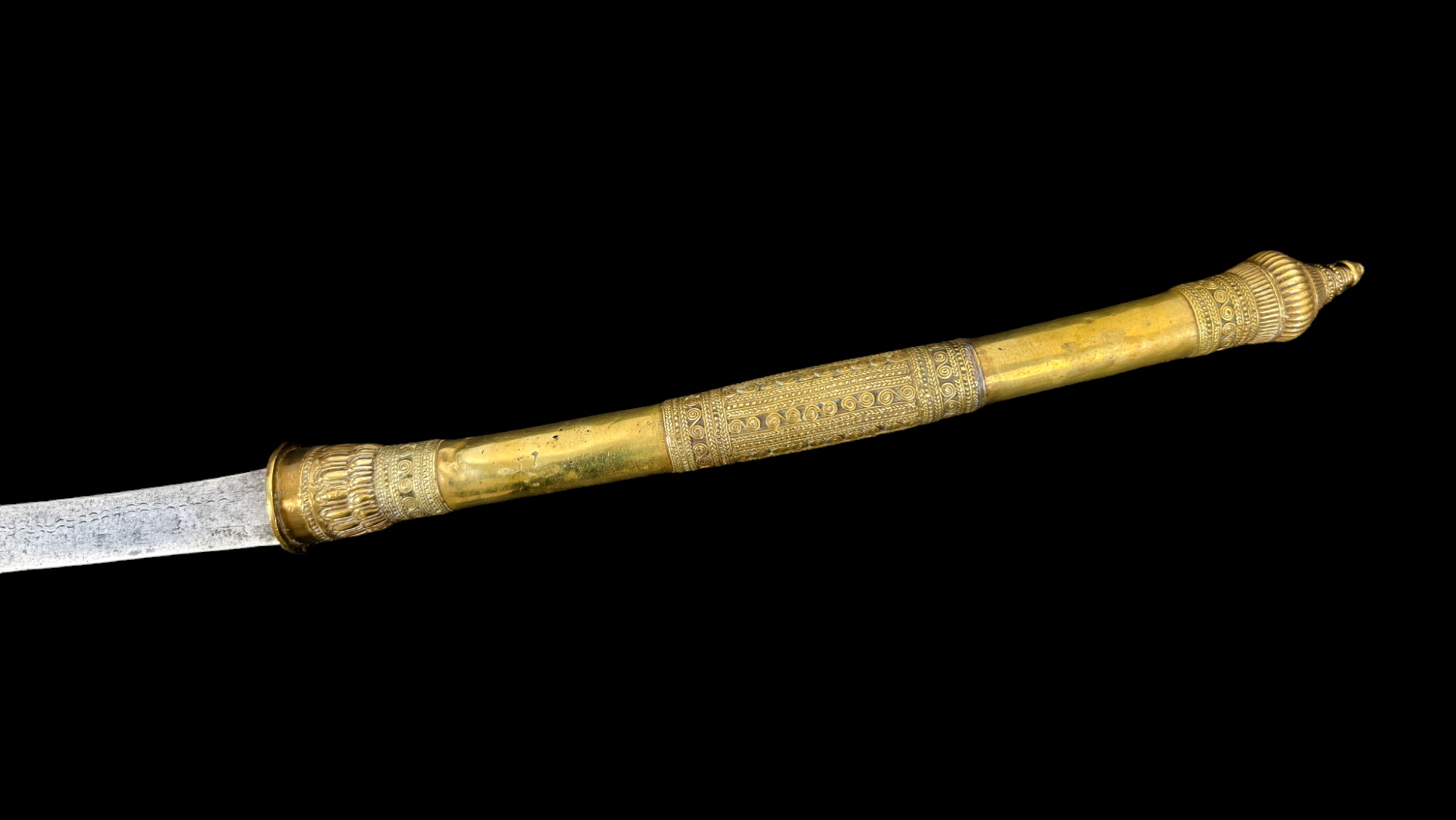
Including fine casting detail on the grip.


And on the pommel.

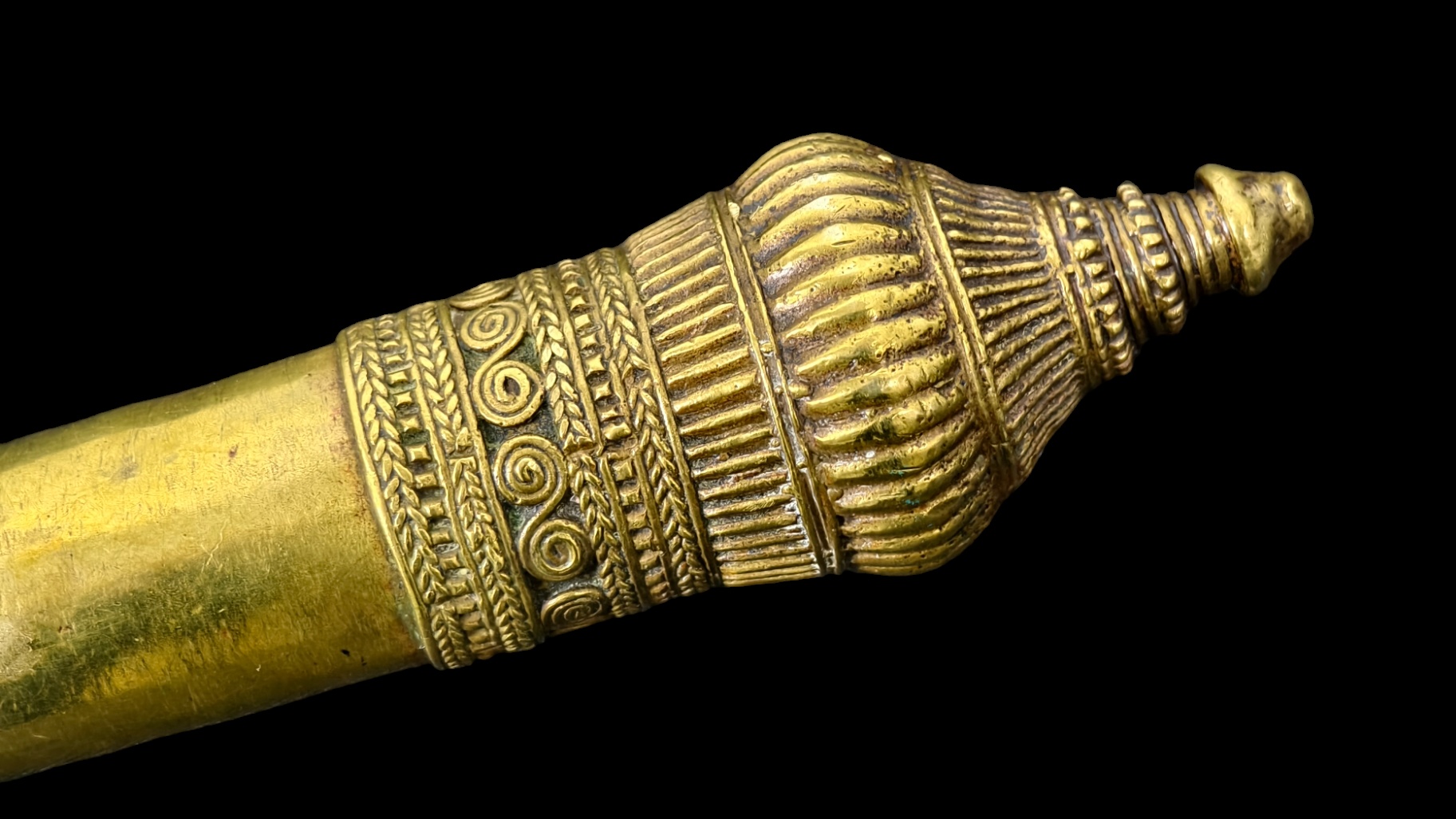
While some swords in this region use a compression fit with wood to hold the blade, this one as with most dha/daab uses kithai resin to secure the blade. This seems to be an older style, with later examples often encountered with hill tribes using a the compression method. Perhaps due to a lack of knowledge or access to the resin.
The spine is also extremely thick on this example, measuring 12mm at the base.

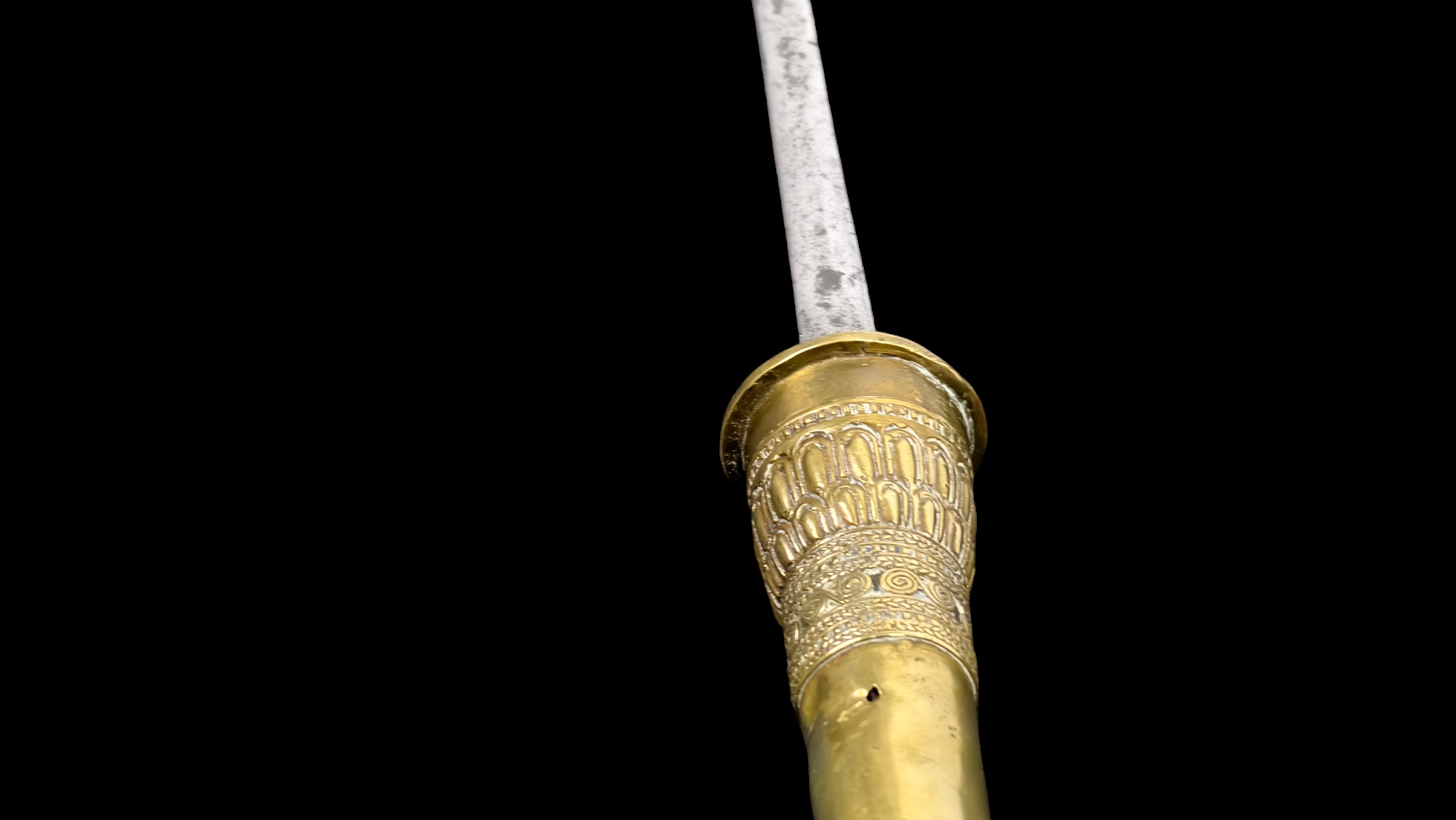
The uniformity in style of many of these swords point to a likely military origin and mass production. The tumultuous period of the 18th century in the region is the likely origination of the style as there was a need to quickly produce a large number of arms.
This particular piece is exceptional in that the scabbard is intact, which features intricate rattan weaving with a mix of both brown and black patterning.
.jpeg)

The scabbard, given the condition is most likely newer than the sword itself, this is a common practice in the region.
These swords are a unique blend of an ancient history of cast handled swords that continued until the 20th century in moderate isolation due to the nature of the region. The casting method itself dating back to the Dong Son and Khmer periods. The blades on these swords are varied, with some earlier blades showing clear signs of lowland lao influence with elegant curved blades and spines similar to other Lao swords, while some feature more wedge shaped tips typical of hill tribe work. Generally these are later with the more clearly Lao examples being earlier.
I have notice over the years that more and more collectors have come to appreciate this substyle of dha and appreciate the true history of the type as a style that has had extreme longevity and deep roots in the region.